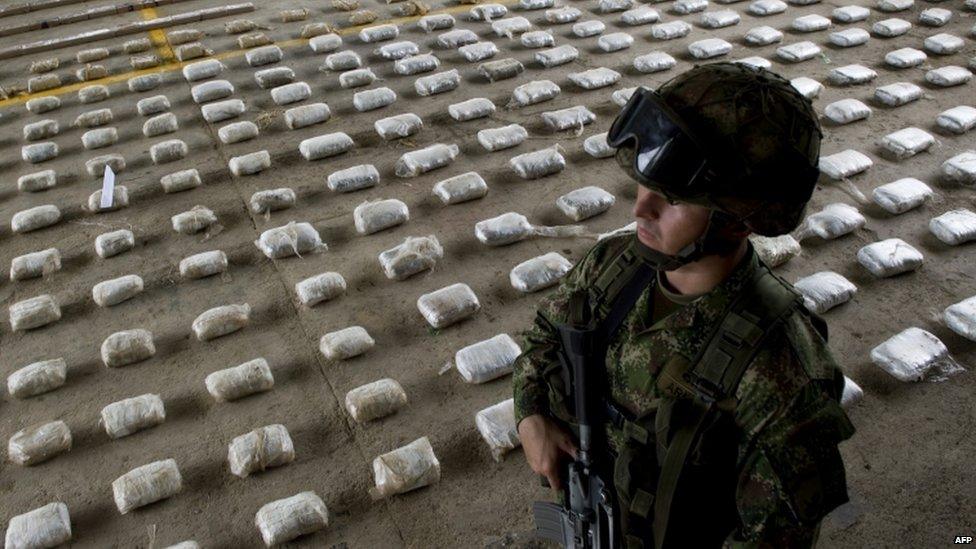Colombia coca leaf production up by 44% - UN
- Published

Most of the increase in coca and cocaine production was in southern areas of Colombia
The area used for the coca cultivation in Colombia increased by 44% last year, a United Nations report says.
Most of the rise in the cultivation of coca leaves - the raw ingredient for cocaine - comes from southern areas controlled by left-wing Farc rebels.
Farmers have probably boosted production to cover potential losses in the event of a peace deal between the Farc and the government, says the UN.
They fear an agreement will include programmes to eradicate coca.
The Farc and the Colombian government have been engaged in peace talks since November 2012.
The rebels have already agreed to encourage local farmers to join voluntary programmes to replace coca with other crops.
'Warning signal'
The says the potential production of cocaine went by more than 50% in 2014.
Andean countries' farmers have been encouraged to stop growing coca and to switch to other crops
"The change is an important warning signal," said Leonardo Correa, one of the authors of the annual report.
The assessment is based mostly on satellite photographs.
Reports on Bolivia and Peru are due in the next few weeks.
The three countries are the world's largest producers of coca leaves and cocaine.
Crop spraying
In May, Colombia announced it was stopping using a controversial herbicide to destroy illegal plantations of coca.
The decision followed a warning by the World Health Organization (WHO) that glyphosate is "probably carcinogenic".
The product has been used in US-sponsored crop-spraying anti-narcotics programmes in South America.
President Juan Manuel Santos said Colombia would need to find other mechanisms to combat coca production.
The Colombian drug eradication programme, which is sponsored by the United States, began in 1994.
- Published23 June 2015
- Published10 May 2015
- Published14 February 2023